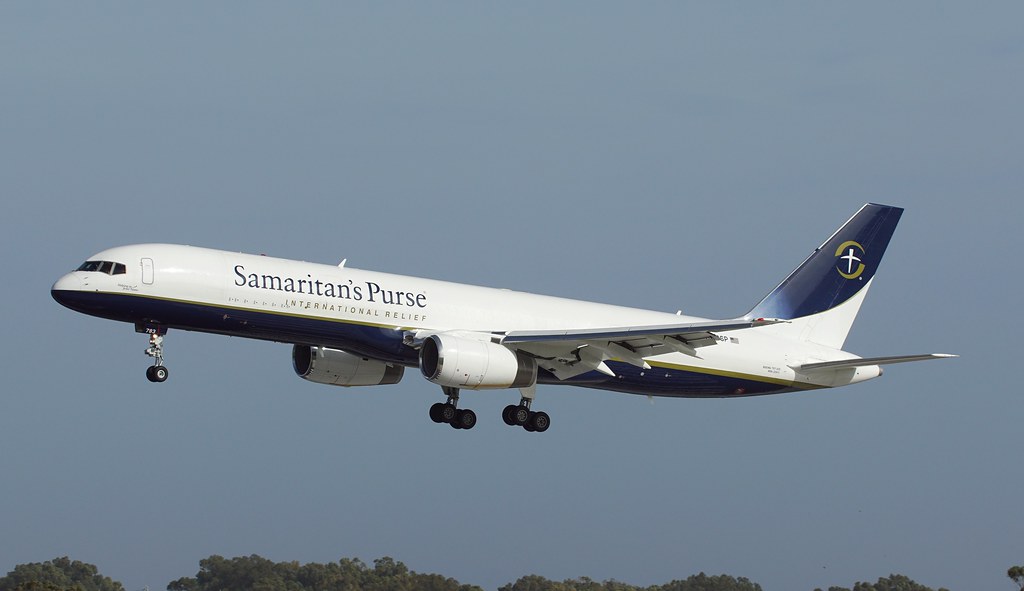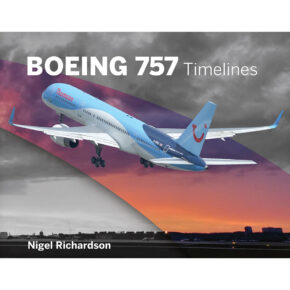Eastern Air Lines still remains one of the great names in aviation, and one of the much lamented lost carriers from our skies.
Its silver fleet of aircraft once plied the US domestic routes and dominated its home turf of Atlanta and Florida, with even some key international services flown.
Despite having been founded in 1926, Eastern sadly ceased flying in 1991.
Eastern and the Boeing 757
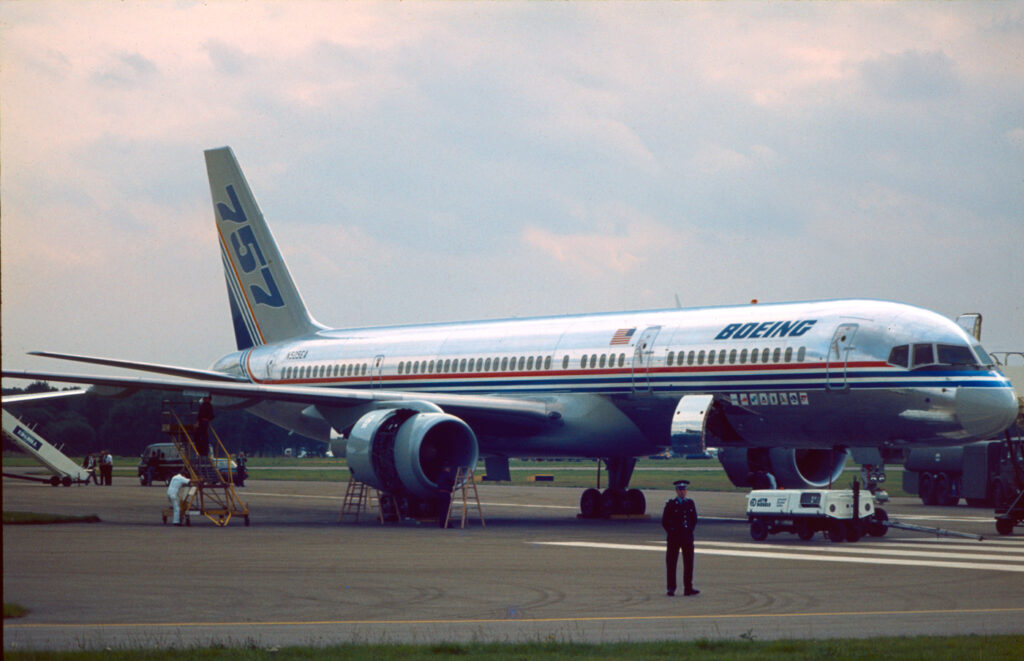
In the late 1970s Eastern Air Lines – under the leadership of enigmatic former astronaut Frank Borman – was looking to turn around years of losses.
One of its key plans was to replace older Boeing 727 and Douglas DC-9 aircraft types with something modern.
It had been known that Boeing was developing a new airliner – known as the 7N7 at the time – but it was still years away. As a stop gap, Eastern negotiated a good deal for the Airbus A300, which thus far had not been purchased by any US airlines.
It turned out to be a good fit for the airline, particularly on some of its high load routes, working alongside the L1011 TriStar fleet.
When the 757 finally did emerge, Eastern was in a position to commit and, alongside British Airways, became the launch customer with an order for 21 of the type (with 24 options) in 1978.
The order was worth $560 million at the time, and the type was considered to be a good fit for the airline’s low-cost operations to replace ageing aircraft in its fleet.
Entry into Service
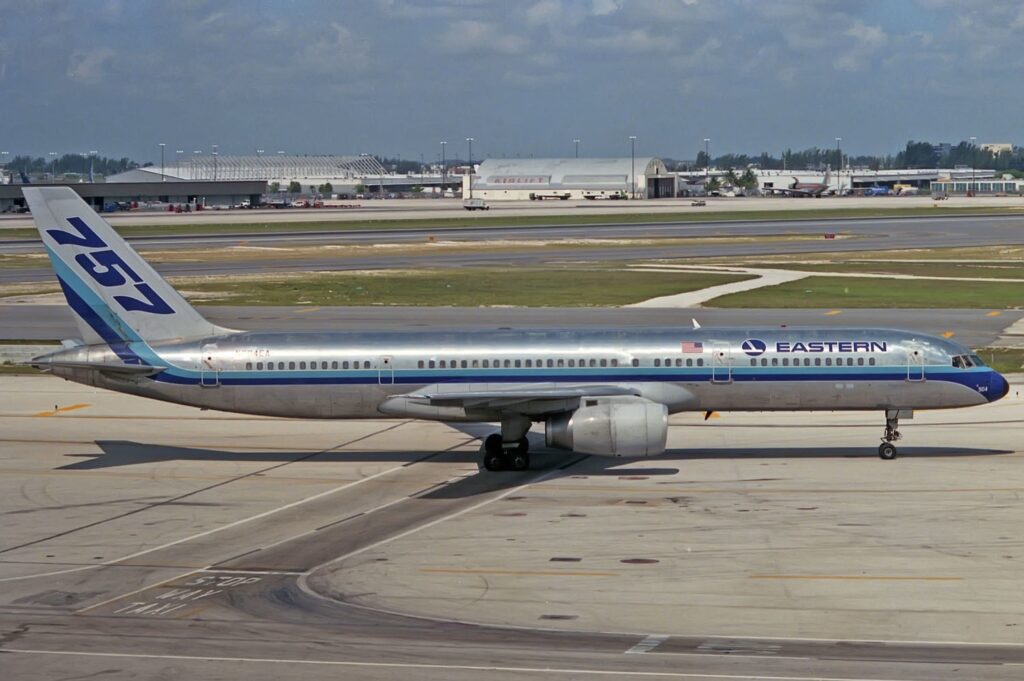
Delivery of Eastern’s first Boeing 757 took place on 22 December 1982, and the airline made the first commercial service with the type on 1 January 1983. It was the first airline to do so.
It took the opportunity to introduce a fresh new cabin design and made much fanfare over the introduction of the 757, even if behind the scenes the airline was struggling again with costs and issues with unions.
The first route flown by Eastern’s 757s was Atlanta to Tampa, but soon the type began serving other domestic routes.
Later, from the 18th aircraft delivered, Eastern’s 757s featured the more powerful Rolls-Royce RB-211-535-E4 engines, which were certified for overwater use and enabled the airline to introduce the aircraft on services to Caribbean and South American destinations; this was at a time before ETOPS (Extended Twin Engine Operations) had been developed.
Eastern’s 757 Tails
Because some of Eastern’s Boeing 757s took part in the certification programme and promotional tours for the new type, they had been painted with large ‘757’ numbers on the tail instead of the usual ‘hockey stick’ design worn by other Eastern Air Lines aircraft.
While planned to be painted over on delivery, Eastern’s bosses had a last minute change of heart and decided to keep these numbers on the tail as a novel promotional move to help publicise their new aircraft. As a result, marketing materials were quickly modified, and the aircraft remained with this livery until repainted years later.
End of Eastern 757s and Later Life
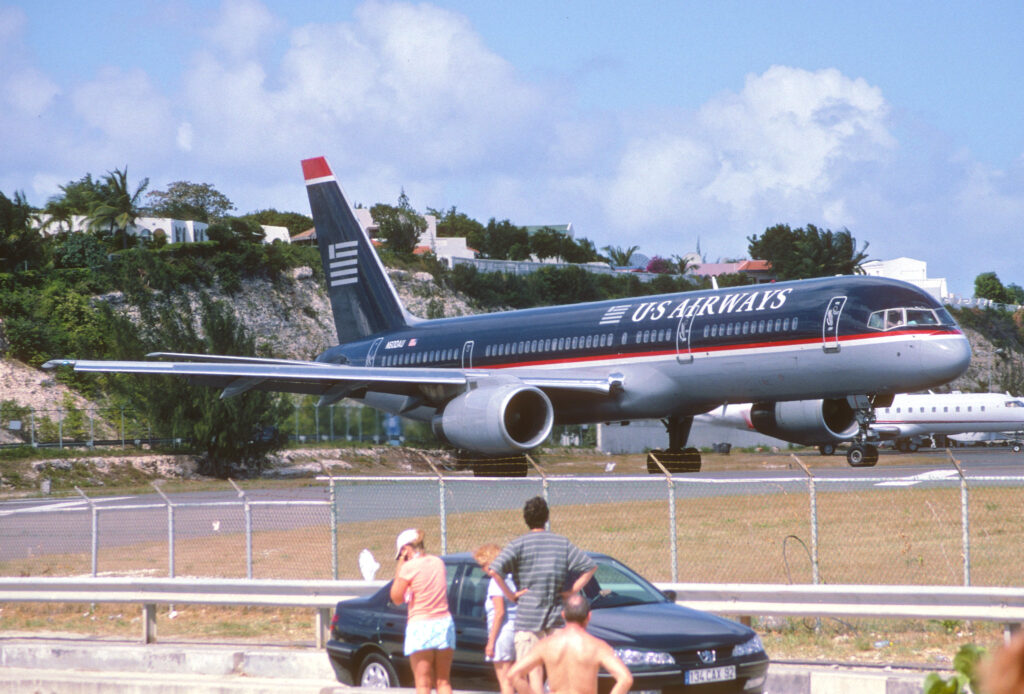
The former N502EA went on to fly for US Airways. Photo (c) Aero Icarus
Eastern Air Lines sadly did not last much longer, with mounting financial pressures and poor business decisions, coupled with increased competition from other startup low-cost carriers, led to the airline failing. It flew its last service on 19 January 1991, after various parts of the business had been sold off.
Despite being some of the first off the production line, Eastern’s Boeing 757s were still relatively young, and had a strong resale value. They therefore found themselves moving on to fly for other airlines, with some lasting many more years.
The fleet numbered 25 aircraft at the time of the airline’s closure.
Eastern Air Lines Boeing 757 Fleet

N510EA (22919/2)
N502EA (22192/3)
N503EA (22193/4)
N504EA (22914/5)
N505EA (22195/6)
N506EA (22196/7)
N507EA (22197/8)
N508EA (22198/12)
N509EA (22199/17)
N510EA (22200/20)
N511EA (22201/21)
N512EA (22202/22)
N513EA (22203/26)
N514EA (22204/27)
N515EA (22205/28)
N516EA (22206/31)
N517EA (22207/35)
N518EA (22208/38)
N519EA (22209/40)
N520EA (22210/42)
N521EA (22211/74)
N522EA (22611/75)
N523EA (22612/114)
N524EA (22688/115)
N525EA (22689/117)
Following service with Eastern, many of its 757s were sold to US Airways. Some also found a new life with the UK’s Airtours International.
Eastern Boeing 757 Survivors
Of the 25 Boeing 757 aircraft delivered to Eastern Air Lines, most have now sadly been scrapped. Some still survive at the time of writing, however.
To begin, there is mystery surrounding the first delivery. The aircraft which was N501EA was sold to NASA in 1994, becoming N557NA and based at the Langley Research Center. It was then sold to Starflite International Corp in 2009 as N144DC, but the trail has gone cold since. Does the aircraft still exist? Is it flying? Leave a comment below if you know!
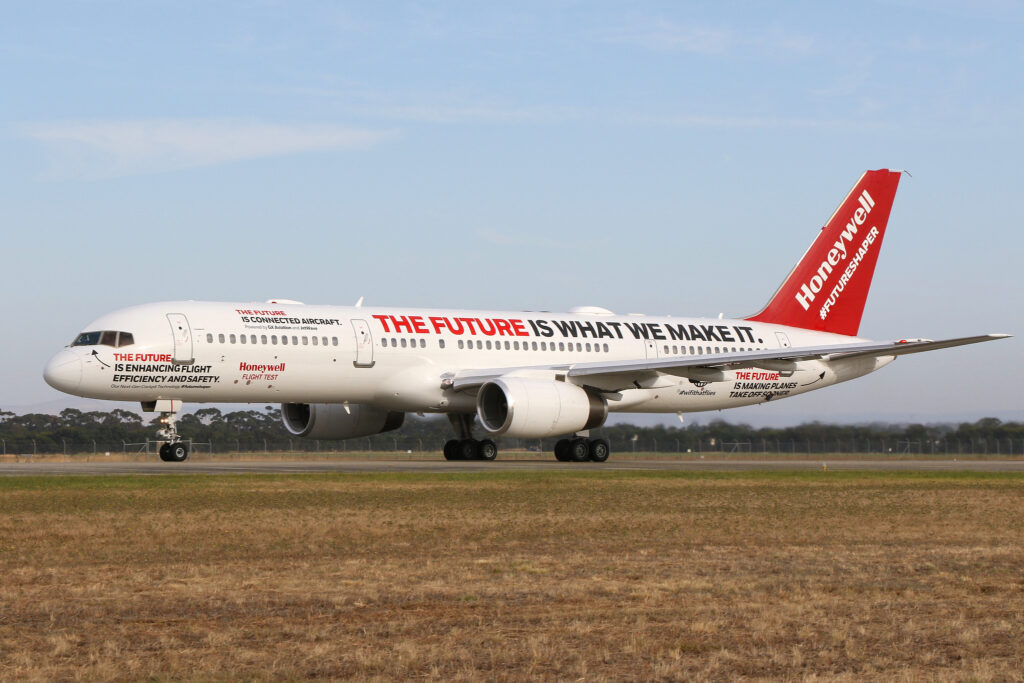
The Honeywell Boeing 757 N757HW in 2023. Photo (c) joolsgriff
N504EA is one of the aircraft which went to Airtours International in 1995. It was then sold to Honeywell International in 2005 as N757HW as an engine testbed. It is based at Phoenix Sky Harbor airport and is possibly the oldest flying 757 in the world.
N519EA’s cockpit is thought to survive today as a training aid at the Tennessee College of Applied Technology in Memphis, TN.
N521EA, having flown for various airlines in Europe like Air 2000 and Excel Airways, was most recently spotted in Budapest having been converted to a freighter. It had the registration N314ST. No recent flights have been noted, so its fate is unknown.
N522EA also spent time with Air 2000 and Excel Airways, before becoming a freighter and flying for VARIG Log, Pacific Express Australia and DHL. Today it is flying for the charity Samaritan’s Purse as N783SP.
N523EA most recently flew as a freighter with FedEx Express, but was retired to Victorvilla, CA, on 17 January 2024 to presumably be scrapped.
 Boeing 757 Timelines
Boeing 757 Timelines
The new book, Boeing 757 Timelines, by Nigel Richardson, looks at the history of this iconic and well-liked airliner. Telling the story of its development, introduction to service and operational life with airlines like Eastern, the book is packed full of detail and plenty of photographs of the 757 in service over the years.
You’ll also learn about the different 757 variants, and its uses in cargo, military and other roles.
Order Your Copy Today

![[3_1]](https://www.airportspotting.com/wp-content/uploads/2024/04/3_1.jpg)
